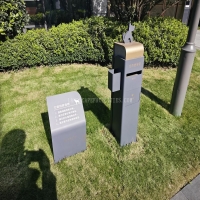Welcome to the website for landscape facilities products and knowledge.
How does the table’s design accommodate the need for quick and easy transitions between different room layouts?
In today's dynamic event and workspace environments, the ability to rapidly transform room layouts has become paramount. Modern table designs address this need through sophisticated engineering principles that prioritize both speed and simplicity in reconfiguration. The cornerstone of this adaptability lies in modular design philosophies, where tables are conceived as interconnected systems rather than standalone pieces.
Contemporary flexible tables incorporate several groundbreaking features that facilitate swift transitions. Lightweight composite materials reduce physical strain during movement, while integrated locking casters provide mobility without compromising stability. Many manufacturers have developed patent-pending folding mechanisms that allow standard banquet tables to collapse and deploy in seconds, effectively cutting transition time by up to 70% compared to traditional tables.
The revolution extends to connection technologies, where magnetic coupling systems and precision-engineered joiners enable seamless table combinations. These innovative attachment methods eliminate the cumbersome bolt-and-nut assemblies of yesterday, instead offering click-and-connect simplicity that maintains structural integrity across various configurations. Some advanced systems even incorporate RFID technology to guide optimal placement patterns for different event types.
Ergonomic considerations have been thoroughly integrated into these designs. Beveled edges prevent damage to floors during transitions, while weight distribution calculations ensure even heavy tables remain balanced during movement. The incorporation of adjustable height mechanisms further enhances versatility, allowing the same table to serve multiple functions from dining surface to presentation station.
Manufacturers have also developed comprehensive ecosystem approaches, where tables are designed with complementary elements like storage carts and mobile bases. These integrated systems create complete workflow solutions for venue staff, dramatically reducing the labor typically required for room transformations. The result is a new paradigm in space management—where what once required hours of manual labor now unfolds in a matter of minutes, empowering venues to host multiple event types within tight turnaround windows without compromising on quality or aesthetics.
This engineering marvel represents more than mere convenience; it constitutes a fundamental shift in how we conceptualize and utilize flexible spaces. Through intelligent design and human-centered engineering, modern tables have transformed from static furniture into dynamic tools that actively enhance spatial efficiency and operational fluidity.
Related search:

Recommendation
Outdoor cat and dog feces trash can; Community pet trash can; Metal multi-color design